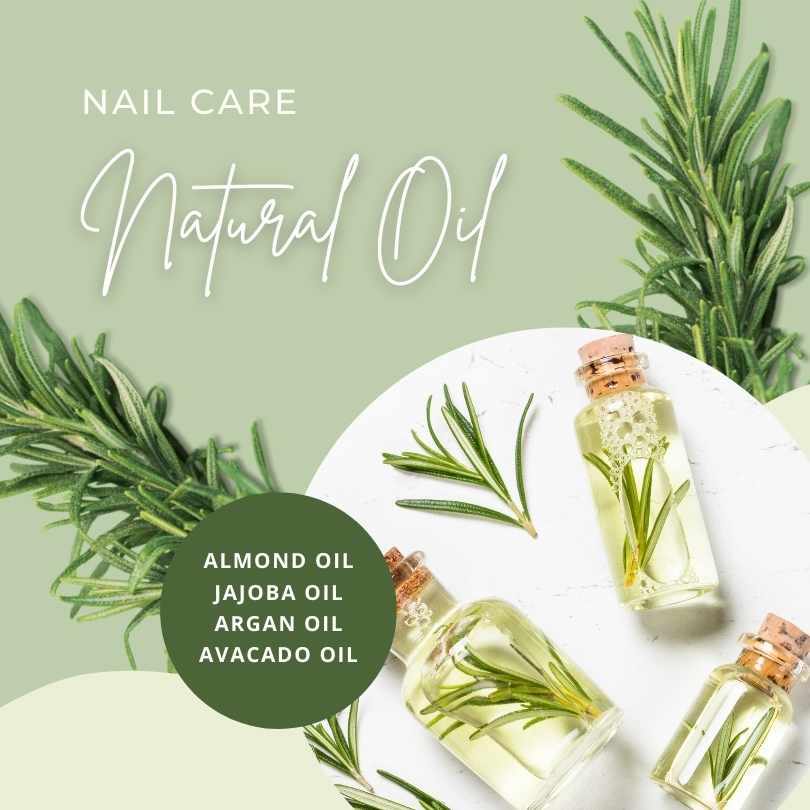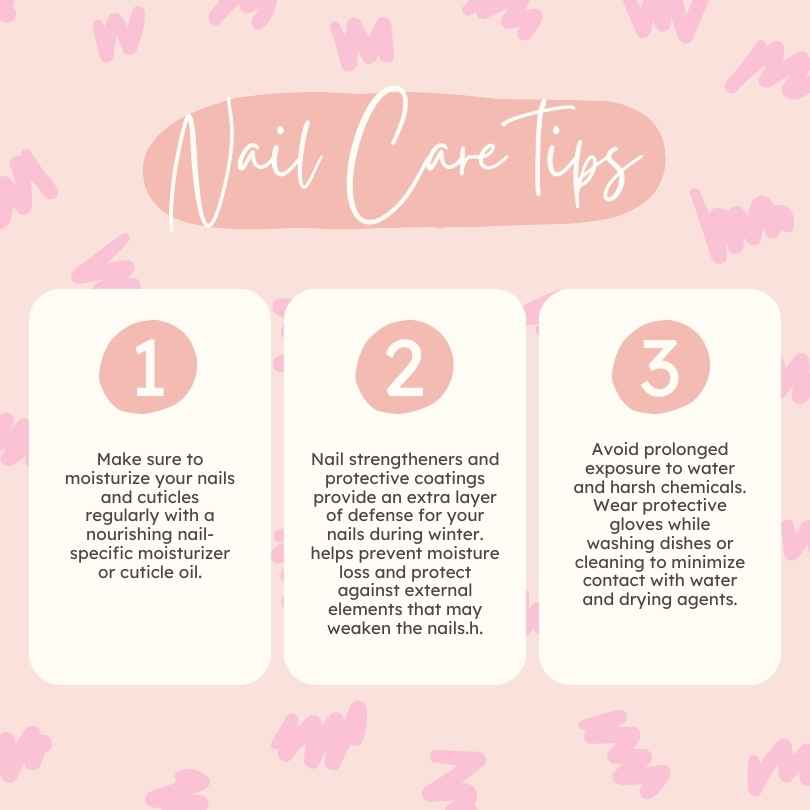Table Of Contents
Introduction
Hey there! When it comes to winter fashion, it’s not just about looking cool and cozy; it’s also about taking care of every little detail, like your fabulous nails! As the chilly weather arrives, it’s time to think about how your accessories can affect your nails. Trust me, you don’t want to leave them out in the cold! So, let’s talk about some awesome tips to keep your nails both stylish and healthy this winter. After all, who says you can’t rock stunning nails even when it’s freezing outside?
The Impact of Winter on Nails
How cold weather affects nails
- Cold temperatures: Cold weather can cause constriction of blood vessels, reducing the blood flow to the extremities, including the nails. This decreased blood flow can lead to a lack of essential nutrients reaching the nails, resulting in potential nail problems.
- Low humidity: Winter air tends to be drier, with lower humidity levels both indoors and outdoors. This dryness can strip moisture from the nails, making them more prone to dryness and dehydration.
- Exposure to harsh elements: Nails are exposed to various harsh elements during the winter, such as cold wind, snow, and rain. These external factors can further contribute to the weakening of the nails.
Dryness, brittleness, and other common issues
- Dry nails: The lack of moisture in the air during the winter can cause nails to become dry and brittle. Dry nails are more likely to crack, peel, or break.

- Brittle nails: Cold weather can make nails more fragile and prone to brittleness. Brittle nails are more susceptible to splitting or breaking, leading to discomfort and potential nail damage.
- Nail discoloration: Some individuals may notice changes in the color of their nails during the winter. Nails can become dull, yellowish, or develop white spots due to dryness and a lack of moisture.
- Cuticle problems: Cold weather can also affect the cuticles, causing them to become dry, cracked, or even peeled. This can lead to discomfort and potential infection if not properly cared for.
- Understanding these impacts of winter on nails is crucial for implementing the necessary care and maintenance routines to keep the nails healthy and protected during the colder months.
Preparing Your Nails for Winter
Moisturizing routine before winter
Before the onset of winter, it’s essential to establish a moisturizing routine for your nails. This involves nourishing and hydrating the nails and surrounding skin to prepare them for the dryness that comes with the season.
Best practices for nail moisturization
Regular moisturization is key to keeping your nails healthy during winter. Some best practices include
- Applying a nail-specific moisturizer or cuticle oil daily.
- Massaging the moisturizer or oil into the nails and cuticles to improve blood circulation and promote absorption.
- Ensuring thorough coverage of the entire nail surface and cuticle area.
Recommended products for nail hydration
There are numerous products available to provide optimal hydration to your nails. Look for:

- Nail creams or balms contain ingredients like shea butter, jojoba oil, or vitamin E, which nourish and moisturize the nails.
- Cuticle oils are enriched with natural oils like almond, argan, or avocado oil, which help prevent dryness and keep the cuticles supple.
- Hand creams with added nail-strengthening components to provide overall nail and hand care.
Trimming and shaping nails
Proper nail maintenance plays a significant role in keeping them healthy and resilient during the winter. Trimming and shaping your nails correctly helps prevent breakage and maintain their overall appearance.
Proper nail length and shape for winter
- In winter, it’s advisable to keep your nails slightly shorter to minimize the risk of breakage due to harsh weather conditions.
- Consider a rounded or square shape for your nails, as these shapes tend to be less prone to snagging or breaking.
Nail file and cuticle care
- Regular use of a nail file helps maintain a smooth nail edge and prevents roughness that can catch on clothing or other objects, potentially leading to nail damage.
- Additionally, paying attention to cuticle care is crucial. Gently pushing back the cuticles after a warm bath or shower helps maintain their health and appearance.
Protective Measures for Nail Health in Winter
Wearing gloves to protect nails from cold and moisture
Gloves act as a barrier, shielding your nails from the harsh effects of cold weather and preventing excess moisture loss. Remember to wear gloves when venturing outdoors, especially during activities like shoveling snow or skiing.
Using nail strengtheners and protective coatings
- Nail strengtheners and protective coatings provide an extra layer of defense for your nails during winter. They can help prevent moisture loss and protect against external elements that may weaken the nails.
- Implementing these preparatory steps and protective measures will help ensure that your nails are well-cared for and resilient throughout the winter season.
Essential Nail Care Tips for Winter
During the winter months, it’s crucial to give your nails some extra care and attention. The cold weather and dry air can take a toll on your nails, making them prone to dryness, cracking, and other issues. Here are some essential nail care tips to keep your nails healthy and beautiful throughout the winter season.
Keeping nails and cuticles hydrated

Proper hydration is key to combating dryness and maintaining healthy nails. Make sure to moisturize your nails and cuticles regularly with a nourishing nail-specific moisturizer or cuticle oil. Massage the moisturizer or oil into your nails and cuticles to improve blood circulation and promote absorption. This will help prevent dryness and keep your nails and cuticles hydrated.
DIY cuticle oil recipes
If you prefer a more natural approach, you can make your own cuticle oil at home. Here’s a simple recipe:
- Mix equal parts of jojoba oil and vitamin E oil in a small bottle.
- Add a few drops of lavender or tea tree essential oil for added nourishment and a pleasant scent.
- Shake well before each use, and apply a small amount to your cuticles daily.
How to prevent dryness and cracking
- Avoid prolonged exposure to water and harsh chemicals. Wear protective gloves while washing dishes or cleaning to minimize contact with water and drying agents.
- Use a gentle moisturizing soap or hand wash to cleanse your hands without stripping away natural oils.
- Apply a layer of moisturizer or cuticle oil before bed and wear cotton gloves overnight to seal in the moisture.
Gentle cleaning and drying techniques
When cleaning your nails, opt for gentle methods to avoid causing damage or weakening them
- Use a soft nail brush or a gentle nail cleaner to remove dirt and debris from under your nails.
- Avoid using sharp objects or metal tools that can scrape or scratch the nail surface.
- Avoid excessive use of nail polish remover
- Nail polish removers containing acetone or harsh chemicals can dehydrate your nails. Minimize their use and opt for acetone-free nail polish removers instead. Additionally, try to take breaks between manicures to allow your nails to breathe and recover.
Conquer the cold and flaunt fabulous nails
Get your nails winter-ready
Proper towel-drying methods
After washing your hands, it’s important to dry them properly to prevent moisture-related issues
- Pat your hands and nails dry with a soft towel rather than rubbing vigorously, as this can cause friction and potential damage.
- Pay extra attention to the nail beds and cuticles to ensure they are thoroughly dry.
Maintaining Nail Health in Winter
To ensure the health and strength of your nails during the winter season, it’s important to maintain a regular moisturizing routine, prevent nail breakage and brittleness, and consider dietary factors that promote stronger nails. Here are some tips to help you maintain optimal nail health in the winter.
Regular moisturizing routine
Moisturizing your nails is essential to combating the dryness caused by cold weather. Establish a regular moisturizing routine by applying a nourishing nail cream or cuticle oil daily. This will help keep your nails hydrated and prevent them from becoming dry, brittle, or prone to breakage.
Recommended frequency and products
Ideally, moisturize your nails and cuticles at least once a day, preferably after washing your hands or before going to bed. Choose products specifically formulated for nail and cuticle care, such as creams or oils enriched with ingredients like shea butter, jojoba oil, or vitamin E. These ingredients provide deep hydration and nourishment for your nails.
Techniques for optimal moisturization
When moisturizing your nails, follow these techniques for optimal results:
- Apply moisturizer or cuticle oil to clean, dry nails.
- Gently massage the product into your nails and cuticles in circular motions to enhance blood circulation and promote absorption.
- Pay attention to the entire nail surface and cuticle area, ensuring thorough coverage.
Preventing nail breakage and brittleness
Cold weather can make nails more fragile and prone to breakage. To prevent this, consider the following measures:
- Avoid exposing your nails to extreme cold or moisture for extended periods.
- Wear gloves when outdoors to protect your nails from cold temperatures and harsh elements.
- Incorporate nail-strengthening exercises into your routine to improve your resilience.
Nail strengthening exercises
Regularly performing nail-strengthening exercises can help improve the overall strength and durability of your nails. Some exercises you can try include
- Gently tap your nails against a solid surface, like a tabletop or counter, to stimulate blood flow and encourage nail growth.
- Massage your nails and cuticles with a nourishing oil to promote circulation and strengthen the nail bed.
- Using a soft nail buffer to gently buff the surface of your nails can help remove any ridges and strengthen the nail plate.
Dietary considerations for stronger nails
A balanced diet plays a significant role in maintaining healthy nails. Ensure you’re getting essential nutrients that promote nail strength, such as

- Protein-rich foods like lean meats, fish, and legumes, which provide the building blocks for nail growth.
- Foods high in biotin, such as eggs, nuts, and leafy greens, as biotin is known to support nail health.
- Omega-3 fatty acids found in fatty fish, flaxseeds, and chia seeds, which help moisturize and strengthen the nails
Nail-Friendly Winter Fashion
When it comes to winter fashion, it’s essential to consider the impact of your accessories on your nails. By choosing nail-friendly winter accessories and following some tips for safe and stylish nail fashion, you can maintain the health and beauty of your nails throughout the season. Here are some key points to keep in mind
Choosing nail-friendly winter accessories
Opt for accessories that won’t cause damage or snag your nails. Consider the following options
- Gloves: Look for gloves made from soft, non-abrasive materials like cashmere or fleece. These materials provide warmth without causing friction or scratching the nail surface.
- Scarves and shawls: Opt for scarves and shawls with smooth textures to minimize the risk of catching or damaging your nails when wrapping them around your neck or shoulders.
- Handbags and purses: Select bags with smooth, rounded edges and avoid those with sharp metallic accents that can potentially chip or scratch your nails.
Avoid accessories that damage nails
Be cautious of accessories that may cause harm to your nails. Avoid the following:
- Chunky jewelry: Large rings, bracelets, or cuffs with sharp edges can pose a risk of snagging or scratching your nails. Opt for delicate and smooth designs instead.
- Metal accessories: Be mindful of metal accessories, such as belt buckles or hair clips, that can come into contact with your nails. Choose those with smooth surfaces, or opt for alternatives made of fabric or plastic.
Tips for safe and stylish nail fashion
Nail fashion can still be fun and stylish during winter while keeping your nails safe. Consider the following tips
- Keep nails trimmed and filed to a manageable length to prevent them from catching on fabrics or accessories.
- Choose nail shapes that are less prone to breakage, such as rounded or almond-shaped nails.
- Experiment with nail art and designs using nail-safe adhesives, avoiding potentially damaging glue-on nails or sharp accessories.
Nail polish recommendations for winter
During the winter season, opt for nail polishes that provide both style and nourishment for your nails. Look for
- Moisturizing formulas: Choose nail polishes with nourishing ingredients like vitamin E, argan oil, or keratin to help combat the dryness and brittleness caused by cold weather.
- Long-lasting formulas: Select nail polishes with long-wear formulas to minimize the need for frequent touch-ups, as excessive nail polish removal can weaken the nails.

Colors and finishes suitable for the season
Embrace the winter vibe with nail polish colors and finishes that reflect the season
- Deep, rich hues: Dark berry, burgundy, navy blue, or emerald green shades are popular choices for a sophisticated winter look.
- Metallic accents: Consider adding a touch of glamour with metallic finishes like gold, silver, or bronze for a festive and trendy manicure.
Nail polish brands with nourishing formulas
Look for nail polish brands that prioritize nail health and offer nourishing formulas. Some brands to consider include those with
- Formulas are enriched with essential oils, vitamins, and natural extracts to promote nail strength and hydration.
- “5-free” or “7-free” formulations, which are free from potentially harmful chemicals like formaldehyde, toluene, and DBP.
Conclusion
During the winter months, it’s important to give your nails some extra TLC “tender loving care” to protect them from the harsh weather conditions. By following the tips mentioned above, such as moisturizing regularly, protecting your nails, trimming and filing, avoiding excessive water exposure, and nourishing from within, you can keep your nails healthy, strong, and beautiful throughout the winter season. Remember, healthy nails not only look great but also contribute to your overall well-being. So, embrace these nail care practices and enjoy healthy nails all year round.

